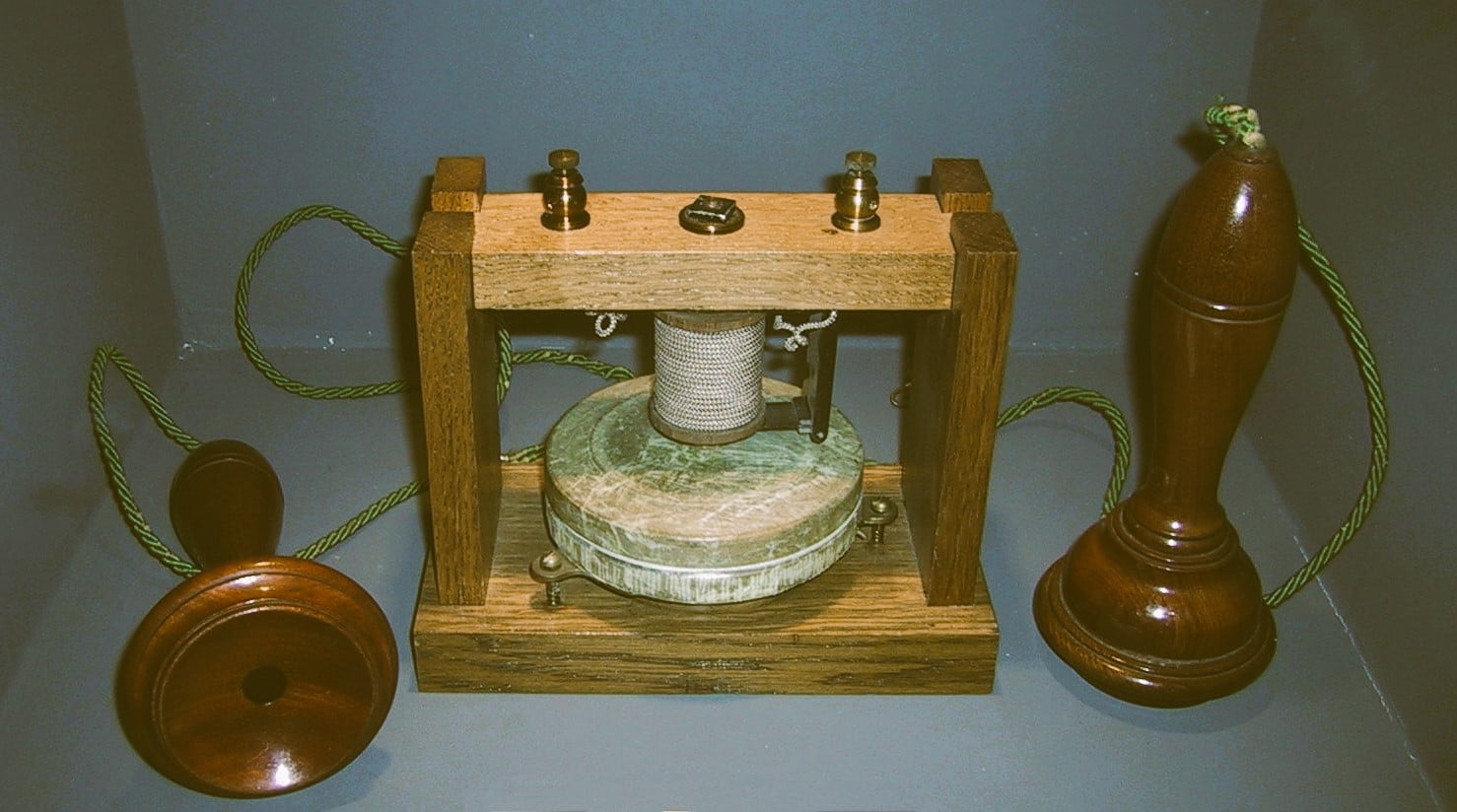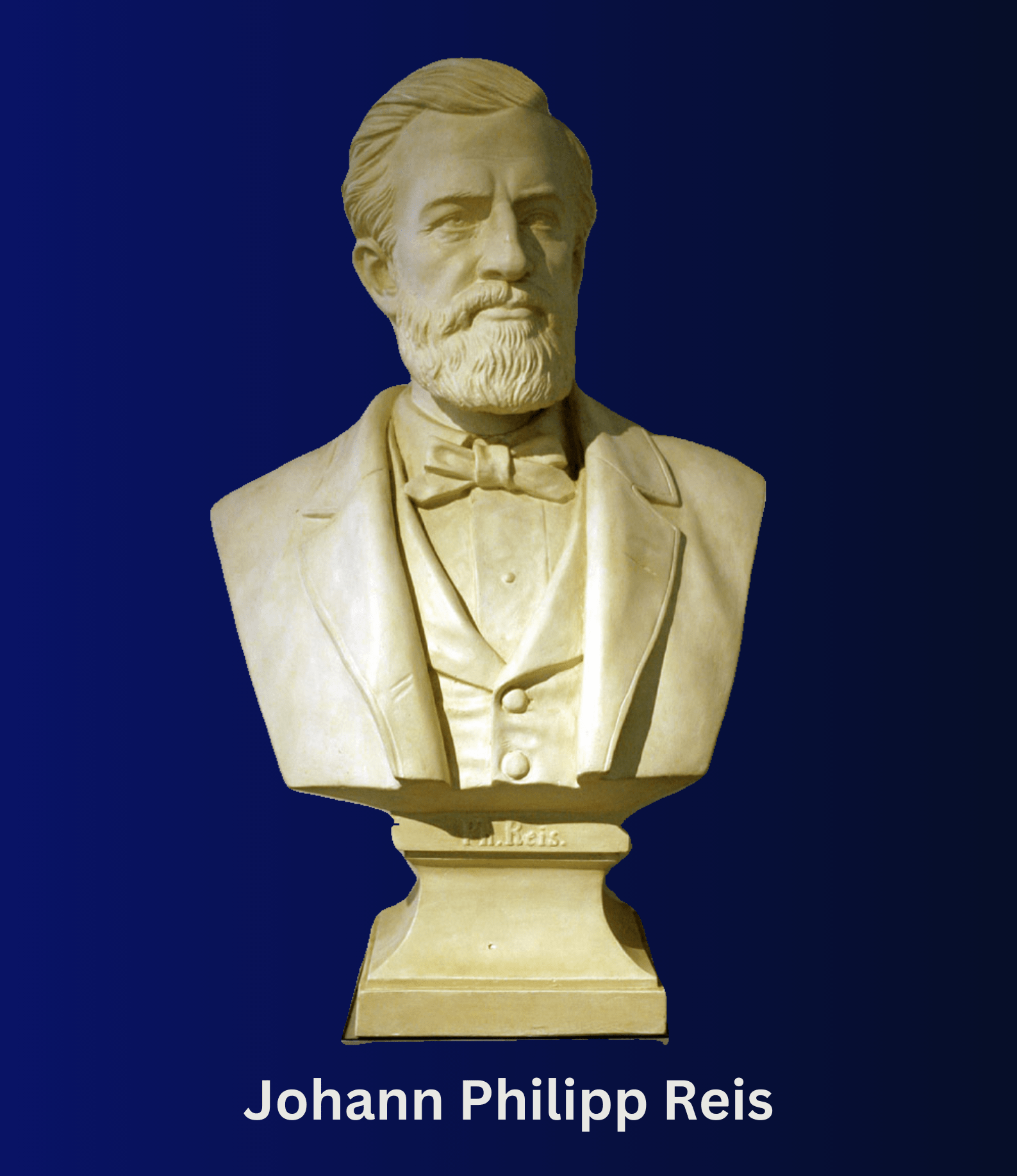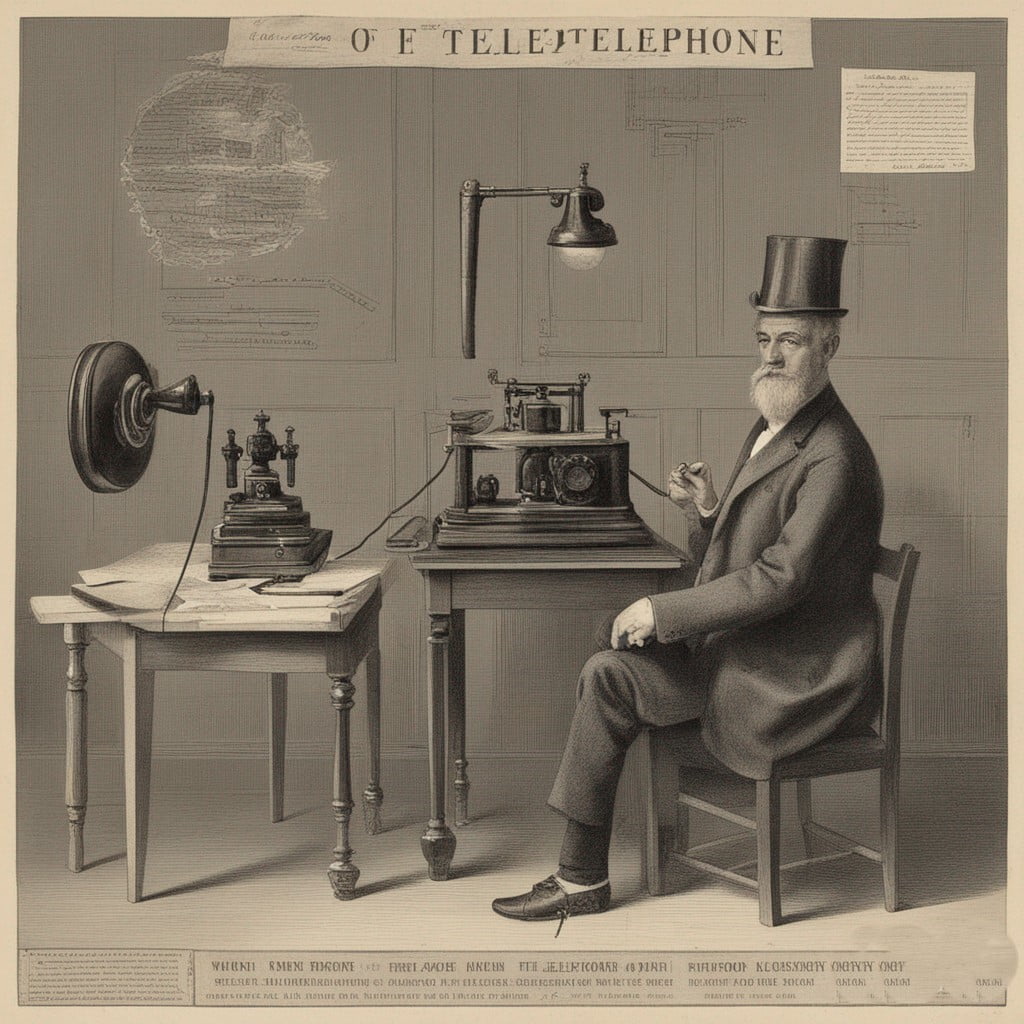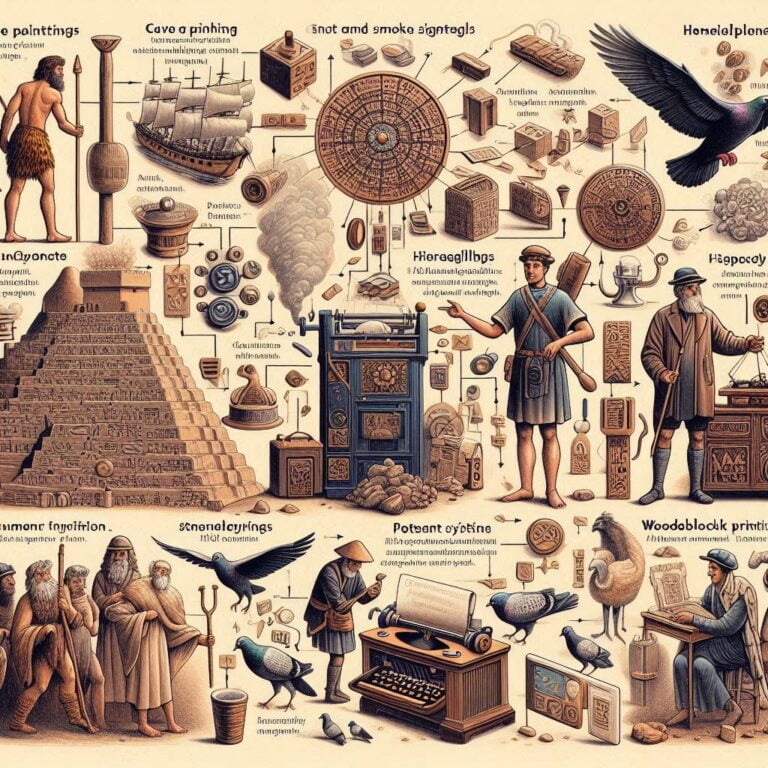Introduction- The invention of the Telephone
In the vast landscape of the history of communication, few inventions have had as profound an impact as the telephone. With its ability to transmit voice over long distances, the telephone transformed the way people communicated, bridging gaps and connecting individuals like never before.
Imagine a world where communication relied on laborious scribblings, slow-moving messengers, and unreliable signals. A world where connecting across vast distances felt like an insurmountable feat. Then, in a flash of ingenuity, the telephone burst onto the scene, forever altering the landscape of human interaction. Its story is woven not just with wires and circuits, but with innovation, competition, and the relentless pursuit of connecting minds.
This blog embarks on a captivating journey through the invention of the telephone. We’ll delve beyond the familiar name of Alexander Graham Bell, uncovering the trailblazers and rivalries that fueled the race for this revolutionary technology. We’ll explore the scientific breakthroughs that paved the way, from understanding electricity to harnessing electromagnetic waves.
The Birth of the First Phone:
In the late 19th century, Alexander Graham Bell, a Scottish-born inventor, set out to create a device that could transmit sound electrically. Working alongside Thomas Watson, Bell finally achieved success in 1876. On March 10th of that year, Bell uttered the famous words, “Mr. Watson, come here, I want to see you,” and the first (first phone ever made) intelligible voice transmission was accomplished. This pivotal moment marked the birth of the telephone and opened a new era of communication.

Changing the Landscape of Communication:
The advent of the telephone brought about a seismic shift in how people interacted over long distances. Before its invention, communication was limited to written letters or telegraph messages. The telephone, with its instantaneous and direct voice transmission, revolutionized the way individuals connected and conveyed information.
With the telephone, geographical barriers were dismantled, and real-time conversations became possible. This breakthrough fostered closer personal and business relationships, allowing for efficient coordination, faster decision-making, and enhanced productivity. The telephone’s impact was particularly profound in business, enabling rapid negotiations, improved customer service, and the establishment of global communication networks.
Timeline of the history of the Telephone Communication:
Before smartphones and video calls, the telephone’s journey began with pioneers fueled by curiosity and a desire to connect. Let’s delve deeper into the stories of three early figures who paved the way for this revolutionary tool:
1667: Robert Hooke – A Seed of Inspiration
Imagine a young Robert Hooke, a brilliant Englishman renowned for his diverse scientific explorations. In 1667, amidst his studies of sound and vibration, he sketched a fascinating concept: a “string telephone”. While it remained just a design, it laid the groundwork for a future connection between sound and electricity. Hooke’s legacy lies not just in this specific invention, but in planting the seed of an idea that would blossom decades later.

Historical References:
- “Micrographia” by Robert Hooke: This seminal work contains Hooke’s original sketch and description of the string telephone.
1821: Johann Philipp Reis – The Electrified Voice
Fast forward to Germany in 1821. Enter Johann Philipp Reis, a physics teacher with a passion for experimentation. He built a device he called the “telephone,” capable of transmitting simple words and musical tones through electricity. Though crude and limited, it marked a significant step forward. Imagine Reis excitedly demonstrating his invention, the crackle of electricity carrying the faint echo of his voice – a glimpse into the future of communication.

Historical Records:
- Reis’s original “telephone” is preserved at the Deutsches Museum in Munich.
- His notebooks document his meticulous experiments and evolving designs.
1844: Innocenzo Manzetti – A Vision Unfulfilled
Across the sea in Italy, Innocenzo Manzetti, a resourceful inventor, envisioned an “electric speaking telegraph” in 1844. While he never built a working prototype, his written concepts outlined a device remarkably similar to what would later become the telephone. Manzetti’s story, though shrouded in some mystery, reminds us that innovation often thrives on multiple voices and ideas, each contributing to the final result.
Mysteries:
- Manzetti’s life and work remain partially shrouded in mystery, with conflicting accounts and limited surviving records.
- Some believe his prototype existed but was lost or destroyed, adding an intriguing layer to his story.
1849: The Shadowy “Teletrofono” and Meucci’s Unfulfilled Dream
While Alexander Graham Bell’s name is often synonymous with the telephone, the story of its invention weaves a more intricate tapestry. Enter Antonio Meucci, an Italian inventor living in New York City. Wracked by financial hardship and caring for a sick wife, Meucci tinkered away in his candlelit basement, fueled by a desire to connect across distance. His invention, the “teletrofono,” remains shrouded in mystery due to limited documentation. Historical accounts suggest it transmitted speech through wires, but details remain hazy. Meucci allegedly even demonstrated it to potential investors, but poverty and legal battles hampered its development. Despite his tireless efforts, Meucci never received the recognition he deserved, leaving his “teletrofono” a whisper lost in history’s shadows.
Sources:
- Antonio Meucci Historical Society
- “The Telephone Gambit: Alexander Graham Bell, Elisha Gray, and the Battle Who Shaped Communication” by Seth Shulman

1874: Alexander Graham Bell and Thomas Watson – A Collaborative Spark in a Boston Workshop
Across the Atlantic, a young Scottish immigrant named Alexander Graham Bell, captivated by the science of sound and speech, embarked on his own telephonic quest. Joined by his assistant, Thomas Watson, Bell’s workshop in Boston became a hive of experimentation. They tinkered with membranes, electromagnets, and wires, their efforts fueled by Bell’s vision of transmitting human speech over long distances. Their journey wasn’t without its hurdles; financial constraints forced them to pawn belongings to keep their experiments going. Yet, their dedication and collaborative spirit laid the foundation for the revolutionary invention that would change the world.
Sources:
- Alexander Graham Bell Museum
- “The Telephone: The First 100 Years” by John Brooks
1875: The Patent Race Heats Up – Bell vs. Gray
1875: As Bell and Watson neared a breakthrough, another name entered the race: Elisha Gray, an American inventor with his own “electro-harmonic telegraph.” Both men filed for patents within hours of each other, igniting a fierce legal battle. Gray’s invention focused on transmitting musical tones, while Bell’s aimed for speech. This seemingly subtle difference proved crucial, with Bell ultimately securing the first U.S. patent for the telephone in March 1876. The legal wrangling continued for years, reflecting this revolutionary technology’s high stakes and immense potential.
Sources:
- Library of Congress
- “Alexander Graham Bell: The Man Who Invented the Future” by Charlotte Gray
1876: A Bell Rings, a Patent Wars, and a Revolution Begins
March 7, 1876: In a moment etched in history, the U.S. Patent Office awards Alexander Graham Bell the first patent for the telephone (patent #174,465). The iconic phrase, “Mr. Watson, come here. I want to see you,” crackles through the wires, marking the dawn of a communication revolution. Bell, a young Scottish-born inventor, had been relentlessly pursuing this dream, fueled by his fascination with sound and deafness in his mother and wife. His journey, however, wasn’t without its twists and turns.
The Shadow of a Rival: Just hours before Bell’s patent, Elisha Gray, an American inventor, filed his own caveat for a “harmonic telegraph” capable of transmitting musical tones. The ensuing patent battle, dubbed the “Great Telephone Case,” became a legal and technological showdown. While both inventions involved sound transmission, Bell’s liquid transmitter, inspired by the human ear, proved more versatile and efficient. This, coupled with meticulous documentation and witness testimonies, secured Bell’s victory on May 10, 1876.
From Prototype to Progress: Bell’s triumph was just the beginning. The first commercial telephone line hummed to life in 1877, connecting Boston and Somerville, Massachusetts. The Bell Telephone Company, founded by Bell and his investors, embarked on a mission to commercialize this revolutionary technology. Within a year, the first telephone exchange in New Haven, Connecticut, allowed multiple users to connect, marking the birth of the modern communication network.
Beyond Patents and Prototypes: This period wasn’t just about technical advancements; it was also about the human stories behind them. Bell, a charismatic figure, actively promoted his invention, conducting public demonstrations and captivating audiences with the magic of instant voice communication. His lab, housed in a modest Boston building, became a hub of innovation, where inventors like Thomas Watson tirelessly worked to refine the technology.
Legacies: The success of the telephone brought immense wealth to Bell and his associates. Their opulent mansions, like Bell’s Beinn Breagh in Nova Scotia, stand as testaments to their ingenuity and entrepreneurial spirit. However, the story isn’t without its complexities. The patent battle with Gray cast a shadow, and accusations of stolen ideas continue to linger.
Beyond the Facts:
- Explore the fascinating patent documents and historical photographs on the Library of Congress website
- Visit the Alexander Graham Bell National Historic Site.
- Read “The Telephone Gambit” by Seth Shulman for a deeper dive into the patent battle and its historical context.
1878: The Birth of Connections in New Haven:
Imagine a bustling New Haven, Connecticut, in 1878. The air hums with anticipation as the first telephone exchange opens its doors. This wasn’t just a building; it was a nexus of communication, allowing subscribers to break free from the limitations of point-to-point connections and connect with any other subscriber in the network. This marked a pivotal moment in communication history, paving the way for unprecedented social and commercial interactions.
Historical Record:
- The original telephone exchange building still stands in New Haven, now repurposed as a restaurant. It remains a testament to the ingenuity of the era and a reminder of the transformative power of communication technology.
Monopoly Wars: The Rise of AT&T (1885)
Fast forward to 1885. The seeds of a telecommunications giant are sown as several smaller companies merge to form the American Telephone and Telegraph Company (AT&T). At its helm stood Theodore Vail, a visionary businessman with ambitious dreams. He envisioned a nationwide telephone network, connecting every corner of the United States. However, his path to dominance wasn’t paved with roses.
Story of the Inventor:
- Theodore Vail, often portrayed as a ruthless businessman, was also a passionate advocate for the power of communication. He believed the telephone could bridge geographical and social divides, fostering national unity and economic growth.
Historical Records:
- Vail’s relentless pursuit of his vision led to accusations of anti-competitive practices and legal battles with rivals like Western Union. His legacy remains complex, reflecting both the innovative spirit and the competitive challenges that shaped the early telephone industry.
1891: Almon Strowger and the Dial Tone Revolution:
Shift gears to 1891. Enter Almon Strowger, a Kansas undertaker with a problem. The local telephone exchange operator, his competitor’s wife, was allegedly diverting his calls to her husband’s business. Fueled by this personal frustration, Strowger embarked on a quest for a solution. The result? The first automatic telephone exchange, eliminating the need for human operators and empowering users to directly connect.
Story of the Inventor:
- Strowger’s invention wasn’t just about convenience; it was about fairness and accessibility. He believed that individuals shouldn’t control communication, and his invention paved the way for a more democratic and user-driven telecommunications landscape.
1904: From Awkward Balance to One-Handed Ease: The “French Phone” Takes Center Stage
Imagine the scene: 1904, a bustling office in New York City. A businessman, clad in a sharp suit, juggles two separate devices – a transmitter held to his mouth and a receiver pressed to his ear – struggling to conduct a conversation. This cumbersome arrangement, the norm at the time, was about to be revolutionized by the aptly named “French phone.”
Developed by the Bell Company, this wasn’t just a technological advancement; it was a revolution in user experience. The “French phone” boasted a single, combined handset for both speaking and listening, eliminating the awkward balancing act and ushering in an era of convenient communication.

The mastermind behind this innovation? Almon Brown Strowger, a Kansas undertaker with a personal vendetta against the inefficient telephone system. Frustrated by the slow and often unreliable service offered by human operators, Strowger set out to design a automatic switching system. His invention, known as the Strowger switch, laid the groundwork for the modern dial tone, paving the way for faster and more independent connections.
However, Strowger’s innovation was met with fierce resistance from the Bell Company, who saw it as a threat to their monopoly. Despite the challenges, Strowger persevered, establishing his own company and eventually licensing his technology to Bell. His legacy lives on in every phone call we make, a testament to his ingenuity and determination.
Historical Records:
- Strowger’s Kansas City home, now the Strowger Automatic Telephone Exchange Museum, offers a glimpse into the life and work of this pioneering inventor.
- The Bell Telephone Memorial in Brantford, Ontario, commemorates Alexander Graham Bell and his early experiments with the telephone.
1915: Bridging the Continental Divide: The Transcontinental Telephone Line
Think about the vastness of the United States in 1915. Crossing the country meant days on a train, weeks on a wagon, and months by sea. Communication, even by telegram, was slow and unreliable. Enter the transcontinental telephone line, a monumental feat of engineering that shrunk the nation’s size in an instant.
Connecting New York City and San Francisco, this 3,400-mile marvel of copper wire and innovation defied geographical barriers. Imagine the thrill of a New Yorker instantly hearing the voice of a loved one on the West Coast, a stark contrast to the weeks of waiting for a letter to arrive.
This project wasn’t just about convenience; it was about unity and connection. It facilitated trade, boosted economic development, and strengthened national identity. The construction, a logistical and engineering masterpiece, involved overcoming harsh terrain, coordinating thousands of workers, and pushing the boundaries of technology.
Historical Records:
- The Western Museum of Communication in Albuquerque, New Mexico, houses artifacts and exhibits dedicated to the transcontinental telephone line.
- The American Telephone and Telegraph Company (AT&T) archives offer a wealth of historical documents and photographs chronicling the project.
1962: Telstar 1: Bridging the Atlantic with a Wink
While the date accurately marks Telstar 1’s launch, it doesn’t capture the awe-inspiring journey. Imagine the excitement as this 171-pound sphere, packed with cutting-edge technology, soared into space. Telstar 1, a collaboration between NASA and Bell Labs, wasn’t just a satellite; it was a symbol of human ambition. Its success, achieved against the backdrop of the Cold War space race, demonstrated the potential for global communication and cooperation.
Historical Records:

- NASA archives: Contain technical details, launch photos and mission reports.
- Bell Labs archives: Offer insights into the engineering and scientific challenges overcome.
Story of the Inventors:
- John Pierce: Bell Labs engineer, envisioned the concept of communication satellites.
- Arnold Reuther: Led the Telstar 1 team, overcoming numerous technical hurdles.
Impact:
- Enabled the first live transatlantic television broadcast, showcasing the power of satellite communication.
- Paved the way for future generations of communication satellites, including those used in GPS and internet connectivity.
1973: Martin Cooper’s Call: A Handheld Revolution
While Cooper’s call marked a significant milestone, the story behind it is even more fascinating. Imagine a world where phones were tethered to walls or carried in bulky briefcases. In 1973, Cooper, working for Motorola, shattered that paradigm with his historic call from a New York City sidewalk. This wasn’t just a technological feat; it was a glimpse into the future of mobile communication.
Historical Records:
- Motorola archives: Contain press releases, photos, and artifacts related to the first mobile phone call.
- Cooper’s autobiography “Cellular: Adventures in Wireless”: Offers a personal perspective on the invention and its development.
Story of the Inventor:
- Martin Cooper: A visionary engineer, driven by a desire to create a truly portable phone.
- Motorola team: Collaborated with Cooper to overcome technical and regulatory challenges.
Impact:
- Sparked the cellular technology era, forever changing how we communicate and interact.
- Paved the way for smartphones, revolutionizing communication, information access, and entertainment on a global scale.
1992: SMS Messaging -:
- Imagine Finland in 1992, a nation known for its innovative spirit. In this fertile ground, Harald Viggo Brun, a young engineer at Nokia, conceived an idea that would forever change how we communicate. He proposed a simple text messaging service, allowing users to send short messages (SMS) between their mobile phones. Initially met with skepticism, SMS soon gained traction, fueled by its simplicity, affordability, and discreet nature.

- The Story of Harald Viggo Brun: Brun wasn’t just an engineer; he was a problem solver. Tired of the cost and complexity of existing messaging options, he envisioned a system accessible to everyone. His persistence and understanding of user needs led to the birth of SMS, a technology that transcended borders and languages, empowering billions with a new way to connect.
- SMS faced initial opposition from some telecom operators who saw it as a threat to voice revenue. However, its rapid adoption by users proved its worth. Today, SMS, despite the rise of more advanced messaging platforms, remains a vital communication tool, especially in areas with limited internet access.
2007: iPhone – The Dawn of the Smartphone Era:
- In 2007, the world witnessed a seismic shift with the launch of the iPhone. This brainchild of Steve Jobs, a visionary leader at Apple, wasn’t just a phone; it was a pocket-sized revolution. It integrated features like a touchscreen interface, internet browsing, and app store, transforming the mobile phone into a multi-functional device.
- The Story of Steve Jobs: Jobs wasn’t just a tech giant; he was a master storyteller. He understood that technology wasn’t just about functionality, but about creating an experience. His relentless pursuit of elegance and user-friendliness made the iPhone a cultural phenomenon, paving the way for the smartphone era.
- The iPhone’s impact extended beyond individual users. It fueled the mobile app revolution, creating new industries and jobs. However, concerns about privacy, screen addiction, and digital divides emerged, highlighting the need for responsible technology development and usage.
Present Day: Beyond Phones – A Connected Future:
- The journey continues even today. Advancements in Voice over IP (VoIP) technologies like Skype and Google Meet enable seamless online calls. Video calling, pioneered by services like FaceTime and Zoom, brings face-to-face interactions to the digital realm. And mobile internet connectivity, fueled by 4G and 5G networks, allows us to stay connected anytime, anywhere.
- Looking Ahead: The future of communication is brimming with possibilities. Artificial intelligence, augmented reality, and even holographic technologies hold the potential to reshape our interactions in ways we can only imagine. However, amidst this progress, it’s crucial to remember the human element. Technology should serve to connect us, not isolate us, and we must strive to use it responsibly and ethically.
Bell Labs
Bell Labs, established in 1925 as the research powerhouse of AT&T, stands as a beacon of innovation and scientific exploration. Founded by Alexander Graham Bell, the mind behind the telephone, this institution quickly became a hub for groundbreaking discoveries that would redefine the technological landscape. From its headquarters in New Jersey, Bell Labs cultivated an environment that encouraged interdisciplinary collaboration, bringing together brilliant minds from diverse fields like physics, engineering, mathematics, and computer science. This melting pot of expertise sparked revolutionary inventions, including the transistor, a tiny yet monumental device that revolutionized electronics and paved the way for modern computing, and the UNIX operating system, which laid the groundwork for much of today’s computing infrastructure.

Throughout its storied history, Bell Labs served as a breeding ground for ideas that transcended boundaries, fostering an environment where theoretical concepts metamorphosed into tangible innovations. It wasn’t merely a research center; it was an engine of transformation, contributing not only technological marvels but also fundamental discoveries like the cosmic microwave background radiation, supporting the theory of the universe’s origins. Its legacy resonates across myriad industries, influencing telecommunications, computing, physics, and materials science, etching an indelible mark on the tapestry of human achievement and technological progress.
The Importance of the Telephone:
The telephone’s importance cannot be overstated. It transformed communication, making it more accessible, immediate, and personal. The telephone fostered global connectivity, brought families and friends closer together, and facilitated efficient business transactions. It spurred innovation, leading to advancements in telecommunications technology and the rise of mobile communication.
Moreover, the telephone laid the foundation for future developments, such as the Internet, which has further revolutionized communication in the modern era. It remains an integral part of our daily lives, even as smartphones and digital communication platforms continue to evolve.
Conclusion
The invention of the telephone by Alexander Graham Bell ushered in a new era of communication, overcoming barriers of time and space. With its ability to transmit voice instantaneously over long distances, the telephone revolutionized personal and business interactions. From its early days to the advent of smartphones, the telephone has continued to evolve, shaping the way we connect with one another.
Alexander Graham Bell’s invention opened up a world of possibilities, transforming communication from a written or coded form to a direct and real-time experience. The telephone’s impact on society has been immeasurable, fostering closer relationships, driving economic growth, and paving the way for future technological advancements. Today, as we carry powerful
communication devices in our pockets, we owe a debt of gratitude to the visionary minds behind the telephone, whose ingenuity forever changed the way we connect and communicate.
Check out some of my other blog posts:








